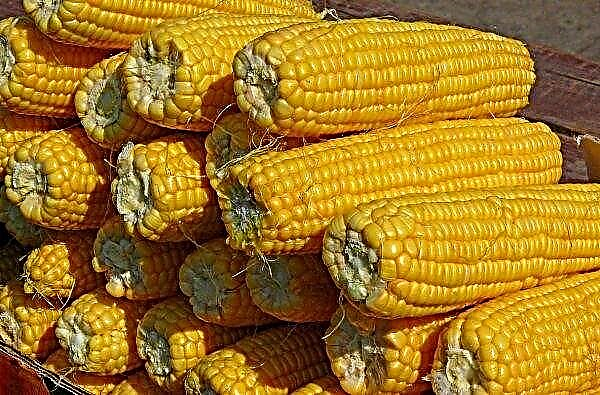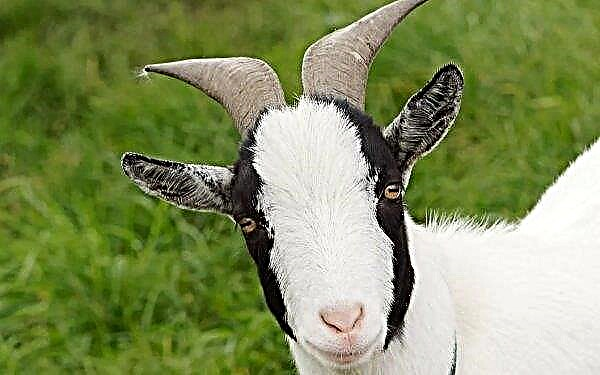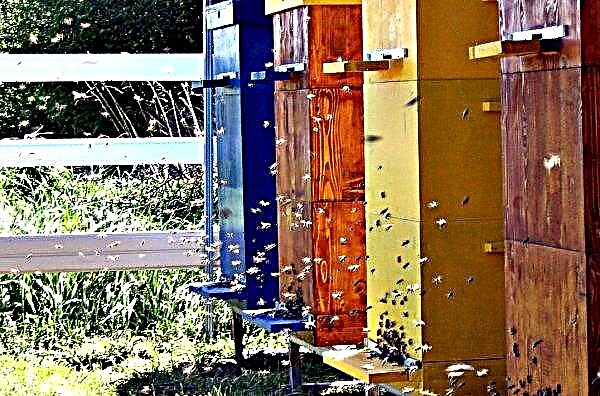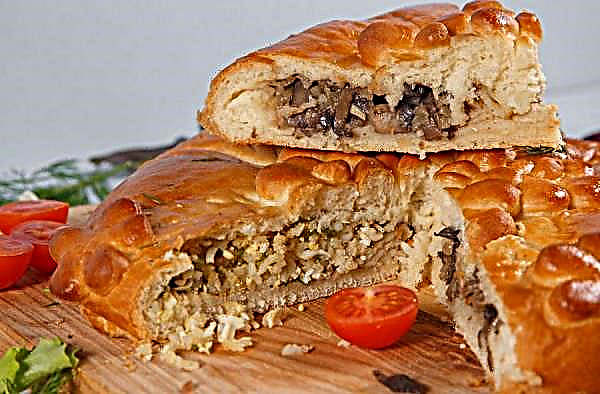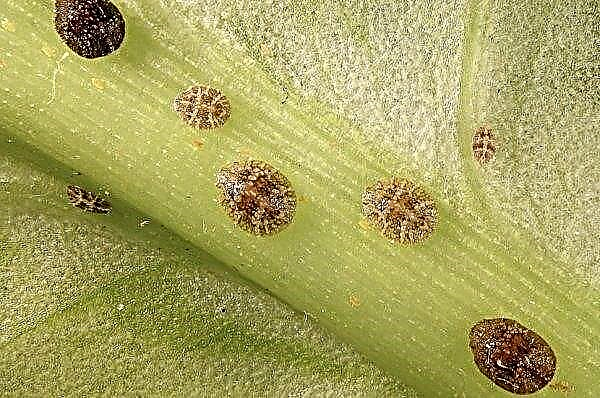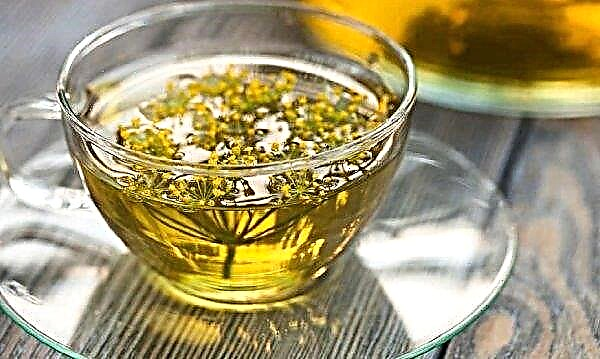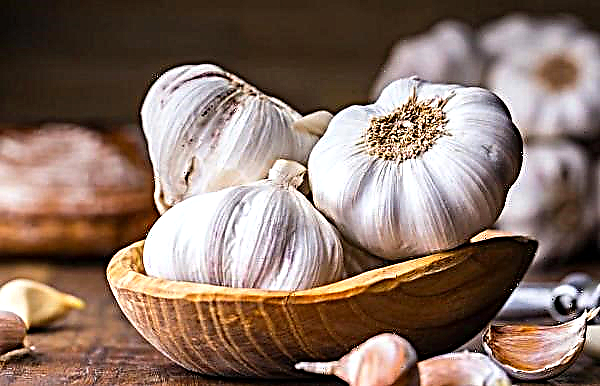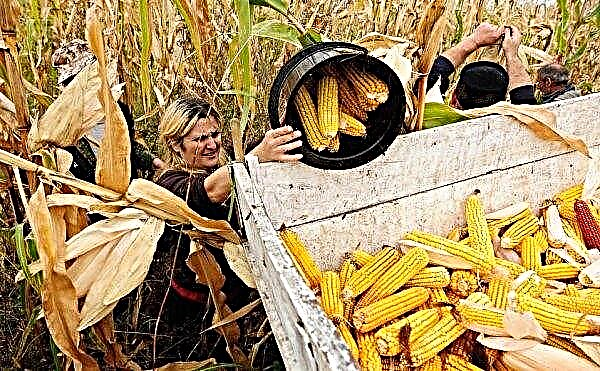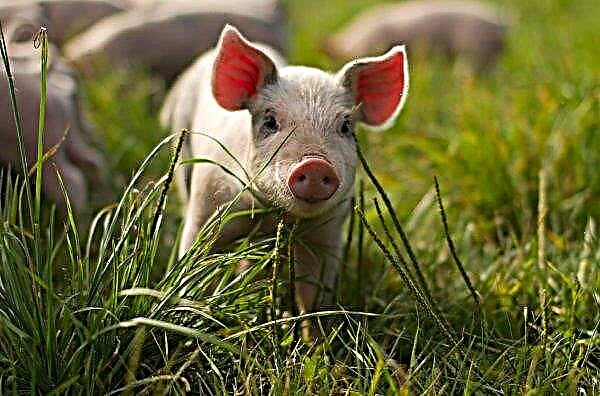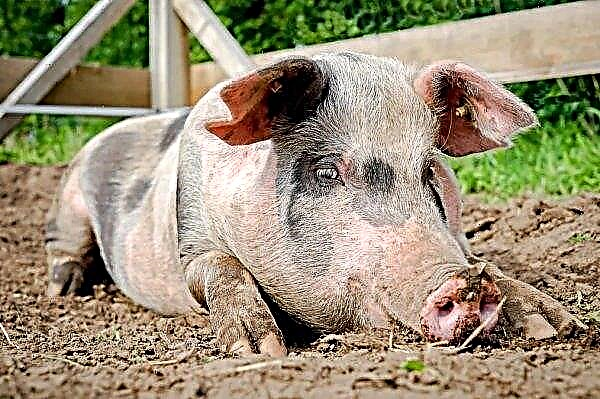Bilbergia, often called pseudo-cereal, is a native of the subtropics of Central and South America. It got its name in 1821 in honor of the Swedish botanist G. Bilberg. For colorful spike-like flowering, many flower growers love the plant. How to grow a flower and take care of it - we will consider further.
Botanical description of the plant
All representatives of the genus (about 60 species) are evergreens growing on trees. Moreover, they are not parasites, but use trees as a support, and to be closer to the light. Bilbergia is an epiphyte, which means that it receives all the nutrients and moisture through the foliage. Its roots serve only as a mount to the support. The stem of the plant is weakly expressed, leaf rosettes form from the side shoots. Sockets are magnificent, leaves in the form of a belt, depending on the type, can be green and colorful. On a long, vertically growing peduncle, drooping inflorescences appear. Flowers, surrounded by bright, often pink bracts, are gathered in a spikelet, for which the epiphyte is called a pseudozlak. It grows from 40 cm to 2 m in height.
The stem of the plant is weakly expressed, leaf rosettes form from the side shoots. Sockets are magnificent, leaves in the form of a belt, depending on the type, can be green and colorful. On a long, vertically growing peduncle, drooping inflorescences appear. Flowers, surrounded by bright, often pink bracts, are gathered in a spikelet, for which the epiphyte is called a pseudozlak. It grows from 40 cm to 2 m in height.
| Root system | Underdeveloped |
| Stem | Weakly expressed |
| Leaf shape | Belt-shaped |
| Leaf color | All shades of green, reddish, speckled, bluish |
| Flower shape | Ear |
| Color of flowers | Bright blue with yellow |
| Fetus | Berry |
| Fruit color | Red |
| Fetal shape | Oval, oblong |
Views
Bilbergia contains in its family more than six dozen species. The most famous in indoor floriculture:
- B. saundersii (Sanders) - foliage with spikes along the edge, the upper side of the plate is green, the bottom red is interspersed with stripes, yellow-green flowers with blue tips, flowering period from June to August;

- B. zebrina (zebra-like) - foliage with a red tint, decorated with stripes of a gray hue, bracts are bright pink, flowering period from June to August;

- B. magnifica (magnificent) - height up to 70 cm, stiff foliage with spikes, blue flowers with long petals, flowering period June-August;

- B. vittata (tape) - olive foliage with a bronze tint, on the outside there are stripes, blue flowers with pink bracts, blooms from April to July;

- B. viridiflora (green) - the foliage is bright green, on the peduncle the plates are dark red, the petals are green, blooms from April to July;
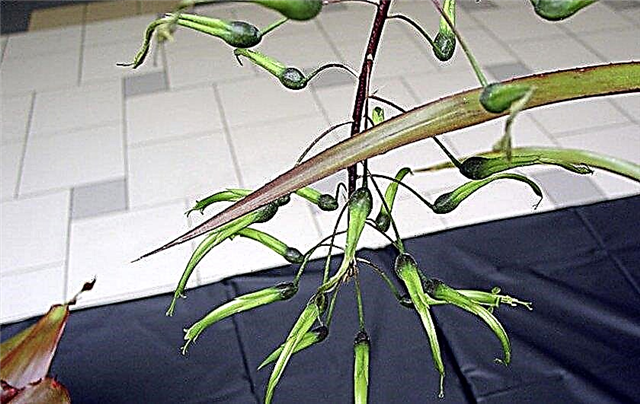
- B. nutans (drooping) - up to 45 cm, foliage is light green, bracts are pink, can bloom at any time of the year;
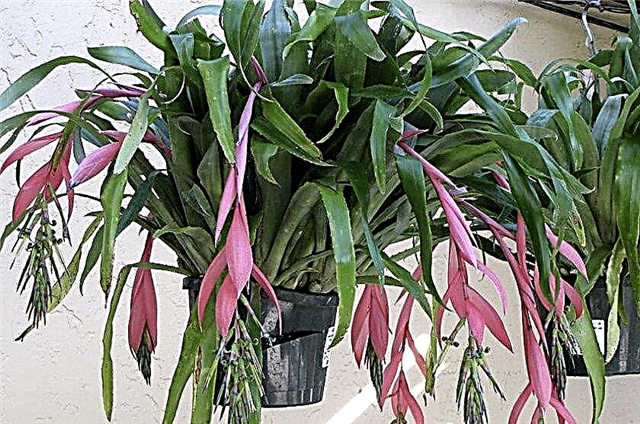
- B. pyramidalis (pyramidal) - leaves of a pink hue, curling at the base of the rosette, peduncle short, small bright red flowers, flowering period March.

Did you know? Bilbergia refers to reservoir epiphytes; in nature, up to 5 liters of water can be stored in its funnel.
Conditions for successful growing at home
In home floriculture, drooping bilbergia is common. Her example will serve to describe the home growing conditions of this plant.
Location
The plant is not placed in direct sunlight. For diffuse lighting, a windowsill or wall on the west or east side is suitable. In the warm season, the flower can be placed on the balcony or porch, the main thing is that there are no drafts.
Temperature
The content during the period of active growth and flowering in the temperature range from +20 ° C to +28 ° C. During dormancy, it is lowered to +15 ° C. The rest period is mandatory for bilbergia: at this time, the formation of flower buds occurs.
Air humidity
The homeland of the epiphyte is tropical forests, so the best development and growth occurs in conditions of humidity up to 80%. It is better to maintain it not by spraying, but by keeping it in a moist substrate. To do this, expanded clay is poured into the pan and moistened regularly.
Important! Spraying, especially during flowering, is not advisable: foliage may become painful.
Home Care
Caring for bilbergia is simple, a beginner grower will also cope.
Watering
The plant does not need frequent watering, only by drying the substrate. However, there are a number of rules:
- Use well-maintained, warm water.
- In spring and summer, the water should be in the funnel of leaves.
- In winter, the funnel should not be wetted.
- Do not wet the funnel at the end of flowering.
- The best option for watering through the pan, while the excess water is drained.
Important! In order to soften the water, it is boiled, adding a few crystals of citric acid.
Top dressing
Complexes for orchids, plants of the bromeliad family are suitable for fertilizing bilbergia. The plant is fed twice a month throughout the flowering period. From the fertilizer indicated on the package, half is taken.
Transfer
The season does not matter when transplanting, with the exception of flowering and dormant periods. The procedure is necessary with a strong growth of roots. A flower can be grown in two ways:
- in a pot;
- on a piece of wood.
In the first case, you can purchase a ready-made substrate for epiphytes in the store or prepare it yourself:
- peat - 1 part;
- humus - 1 part;
- turf land - half;
- sand - half;
- moss - half.
 Drainage holes are made at the bottom of the pot, a strongly overgrown plant is divided into parts. A separate container is used for each seedling, while the main thing in size is not depth, but volume.
Drainage holes are made at the bottom of the pot, a strongly overgrown plant is divided into parts. A separate container is used for each seedling, while the main thing in size is not depth, but volume.
In the second case, the roots of the seedling are cleaned of the remnants of the old soil, wrapped with a layer of moss and wound to a wooden base. Such a flowerpot can be placed on the wall of the room. With this method, you must ensure that the moss is always wet.Important! Pay attention to the acidity of the soil, its indicators should be equal to 5.0.
Breeding
More often, epiphyte is propagated using cuttings or lateral processes, the seed method does not always bring results.
Lateral processes
Growing, the flower forms many processes that, when transplanted, are used as planting material for propagation. They are separated from the mother's root with a sharp knife, sprinkled with slices of crushed activated carbon. Each process is planted in a separate container, covered with a film.
Did you know? Some representatives of flora and fauna, for example, pemphigus and small crustaceans, can live in plant funnels in the natural environment.
Leafy cuttings
With this method, cuttings of at least 20 cm are taken. They are carefully broken off from the mother bush and planted under a cap of polyethylene. Before landing, the fault must be dried. If you plant several cuttings in one container (with a bush), rooting will be faster.
Seed cultivation
 The fruit is carefully released from seeds. Before sowing, they are etched in a weak solution of potassium permanganate, removing specimens that have surfaced. After drying, the material is sown on wet sphagnum moss, covered with a plastic cap. For the success of the operation, you need to monitor the temperature and humidity (+22 ... + 25 ° C, humidity 75-80%). The first shoots appear after about 5-6 weeks.
The fruit is carefully released from seeds. Before sowing, they are etched in a weak solution of potassium permanganate, removing specimens that have surfaced. After drying, the material is sown on wet sphagnum moss, covered with a plastic cap. For the success of the operation, you need to monitor the temperature and humidity (+22 ... + 25 ° C, humidity 75-80%). The first shoots appear after about 5-6 weeks.
Growing difficulties
When growing bilbergia, the main attention is paid to compliance with the regime so as not to encounter possible problems due to errors in care.
Why doesn’t bloom?
A flower grown from seeds or cuttings blooms in the second or third year after planting, lateral processes can bloom the very next year. The main reasons for the lack of flowering:
- a large pot, all the strength goes to rooting;
- little moisture, dry funnel;
- insufficient nutrition;
- not enough lighting;
- there was no dormant period (lower temperature and less watering).

Disease
Epiphyte possesses good immunity, diseases that are usual for other indoor plants are not seen. Possible problems:
- the foliage dries - you need to monitor soil moisture, the presence of water in the funnel;
- foliage at the base of the outlet rots - excess watering, the remaining liquid must be drained, watered as the soil dries;
- deciduous outlet breaks up - need an additional light source;
- spots appear on the foliage - due to direct sunlight.
Pests
Pests attacking the plant suck out juices from its juicy leaves, leaving point traces and spots. In addition, parasites can transmit fungal infections. Bilbergia pests:
The appearance of insects can be triggered by non-compliance with moisture conditions. You need to deal with pests comprehensively:- Delete manually.
- Wash with a soapy solution of foliage and peduncles.
- To process with an insecticide (Fitoverm, Actellik).
Signs and superstitions
According to the ancient Chinese doctrine of harmony and energy exchange of feng shui, bilbergia is considered a symbol of wisdom and spiritual balance. It is able to absorb negative energy, saturating the home atmosphere with goodwill, leveling out conflict situations.
Feng Shui experts recommend placing a flower in the working area for people engaged in mental work, for schoolchildren. The plant contributes to a better concentration of attention and perseverance. Thanks to its positive influence, the ability to remember and absorb new information is improved.
Epiphytus benefits people with respiratory problems. Wide leaves absorb harmful impurities in the air and saturate it with volatile products. A tropical flower is an ideal option for a beginner grower; it does not require much time and care efforts. Due to the biological features (grow on a support), the flower will become an original decoration of home and office interior.
A tropical flower is an ideal option for a beginner grower; it does not require much time and care efforts. Due to the biological features (grow on a support), the flower will become an original decoration of home and office interior.








